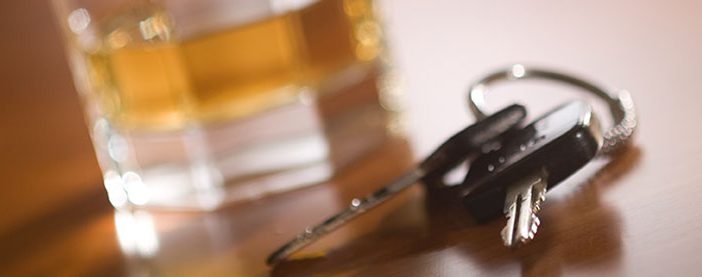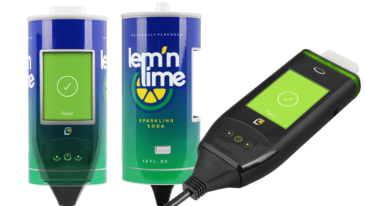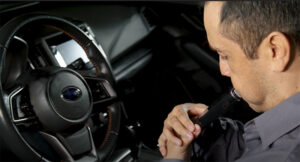
Drinking and Driving Facts
Drunk driving still remains a serious problem throughout our country. While state and federal governments have enacted a variety of laws to discourage and punish drunk driving, one of the best ways to prevent drunk driving is to understand the facts and figures surrounding alcohol-impaired driving. This is not a means of scaring you out of it, but understanding that drunk driving has some serious effects on you and everyone around you. Let’s take a closer look at some drinking and driving facts. These dui facts will make you think twice before getting behind the wheel.
The Prevalence of Drunk Driving
According to the Centers for Disease Control and Prevention, an estimated 28 people die from motor vehicle crashes that involve an alcohol-impaired driver every single day in the country. That averages out to about one drunk driving-related death every 51 minutes. A study from the Department of Transportation found that 10,265 people died in alcohol-impaired driving crashes in 2015. That accounted for almost a third (29 percent) of all traffic-related fatalities in the U.S. for that year.
Even traffic fatalities aside, about 1.1 million drivers were arrested in 2015 for driving under the influence of alcohol and/or narcotics. That’s just one percent of the estimated 111 million self-reported cases of drunk driving in the United States every year. Although this is mainly about drinking and driving, it’s important to note that drugs other than alcohol are involved in about 16 percent of all crashes.
Driving and Blood Alcohol Concentration
Before getting started, its important to understand what is a DUI (Link to: What Is a DUI?) and BAC. DUI stands for driving under the influence of alcohol or drugs. Blood alcohol concentration or content (BAC) simply refers to the level of alcohol present in your system. It is often expressed as grams of alcohol (specifically ethanol) per 100 milliliters of blood. For instance, a BAC of 0.05 means that you have 0.05 grams of alcohol for every 100 milliliters of blood.
Blood alcohol content is often the primary means of determining a person’s drunkenness and can be helpful in determining how fit a person may be to drive, but not all people process one drink at the same rate. Two people may drink the same amount at the same time and still have vastly different blood alcohol concentrations. Some common factors that may affect a person’s blood alcohol content include:
- Body size – Larger people have more blood, bone, and muscle to dilute the alcohol, which means they will take longer to reach the same BAC as a smaller person. Muscle will also absorb alcohol better than fat, meaning that someone with a higher body fat will process alcohol faster, leading to a faster rise in BAC.
- Gender – Similar to the above, men and women tend to have naturally different body compositions, which generally means that women tend to get a higher BAC than men.
- Age – Younger folks tend to have a faster metabolism, allowing them to reach a higher BAC at a faster rate.
- Genetics – The enzymes in your liver that break down alcohol are determined entirely by your genetics. These enzymes work at different rates, so some people are naturally inclined to metabolize alcohol at a faster rate.
- Liver function – A damaged or otherwise unhealthy liver may have trouble properly processing alcohol, resulting in a higher BAC.
Although some states originally set their drinking limit at a BAC of 0.10, today, all 50 states have the drunk driving limit set at 0.08. That means that if you are pulled over and found with a blood alcohol concentration of 0.08, you are violating the law and pose a danger to yourself and those around you.
Buzzed Driving
However, more and more studies are showing the dangers of buzzed or “drink” driving, which refers to any instance of driving where you have a BAC of 0.01 to 0.07. These are technically legal levels in the country. A single drink can increase your blood alcohol content by about 0.02 (with some variations based on various factors), but studies from the UC San Diego suggest that even trace amounts of alcohol at about 0.01 BAC can increase the severity of accidents by 36.6 percent. According to the findings, buzzed driving (a BAC of 0.01 to 0.07) can make you:
- More likely to speed
- More likely to hit another vehicle
- Less likely to wear a seatbelt
The idea is that even one sip of alcohol is enough to affect your behaviors in the slightest way, which can balloon out and result in significant changes to your driving abilities.
Effects of Alcohol Based on BAC
Based on your BAC, you can generally get a good idea of how your behaviors and driving abilities may change.
BAC 0.02 (about two standard drinks)
At this point, you may feel more relaxed and physically warm or experience some loss of judgment. Regarding driving, you may experience a decline in visual function, like the rapid tracking of things in motion, and have trouble performing two tasks at once.
BAC 0.05 (about five standard drinks)
You will have general good feelings and release your inhibitions. You may exaggerate your behavior while also losing muscle control, judgment, and alertness. For driving, this BAC level may result in reduced coordination, difficulty steering, and a harder time responding to sudden emergency driving situations.
BAC 0.08 (about four standard drinks)
You will experience poor muscle coordination and a general impairment of memory, reasoning, self-control, and judgment. It may also be harder for you to detect danger. This poses some serious problems to your driving as you will have severe problems with concentration, speed control, and short-term memory. Your information processing abilities will also get slowed down, and your perceptions will be impaired.
BAC 0.10 (about five standard drinks)
At this point, you are over the legal limit and will suffer a severe and apparent deterioration of self-control and reaction time. You will also slur your speech and experience poor coordination. When driving, you will have trouble staying in your lane or braking properly.
BAC 0.15 (about seven standard drinks)
You will have next to no motor control or balance. You may also begin to vomit. If you attempt to drive, you’ll have serious problems with vehicle control, and you won’t be able to pay attention to driving. Your ability to process visual and auditory information will take a severe dip.
What Constitutes One Drink
Impairment from alcohol is less reliant on the type of alcohol you consume and more affected by the amount of drinks you have over a period of time. However, not many people are aware of what equates to one standard drink, and in many cases, the amount of liquid in your glass or bottle may not match up with the alcohol content. All forms of alcohol—beer, wine, and liquor—have varying amounts of alcohol content.
According to the National Institute of Alcohol Abuse and Alcoholism, a standard drink contains about 14 grams or 0.6 fluid ounces of pure alcohol. This equates to:
- 12 ounces of a regular, non-light beer (about 5 percent alcohol by volume)
- 8 to 9 ounces of malt liquor (about 7 percent alcohol by volume)
- 5 ounces of wine (about 12 percent alcohol by volume)
- 1.5 ounces of distilled spirits or liquor (about 40 percent alcohol by volume)
Alcohol by volume refers to the percent of pure alcohol in a drink and can vary widely even within the same beverage type. While it’s important to understand standard drinking types as a general guideline for your own use, customary serving sizes or what you get poured at the bar may not always line up.
Risk Factors of Drunk Driving
Studies show that younger people are the most at risk for driving under the influence of alcohol. According to the CDC, young people are more likely to be involved in a crash than older people at all levels of blood alcohol concentration. In 2015, among drivers involved in fatal crashes with a BAC of 0.08 or above, about 28 percent were between the ages of 21 and 24. Those age 25 to 34 were the next highest group at 27 percent, while those age 35 to 44 accounted for 23 percent.
Motorcyclists also have a high risk of driving under the influence. Among motorcyclists who died in crashes in 2015, about 27 percent were driving over the legal BAC limit. Motorcyclists in the age range of 35 to 39 had the highest percentage of alcohol-impaired deaths at 37 percent in 2015.
Drivers with a prior DWI or DUI conviction are 4.5 times more likely to be involved in an alcohol-impaired driving incident that results in a fatality.
Drunk Driving and the Holidays
Holidays are a time of togetherness and cheer, and while that often means more congested roads from all the travel, that also equates to greater alcohol consumption. Combining those two often means a higher rate of traffic fatalities caused by drunk driving.
The Insurance Institute for Highway Safety ranks the Fourth of July as the deadliest holiday for drunk driving. Using data from 2005 to 2009, the IIHS found that the Fourth of July saw 144 driving-related deaths on average with teens accounting for about 10 percent of those deaths.
The IIHS also found that Thanksgiving weekend is the most traveled holiday period. DUI arrests are highest from Thanksgiving weekend to the end of New Year’s weekend.
According to the National Institute on Alcohol Abuse and Alcoholism, about 40 percent of traffic-related deaths during the period between Christmas and New Year’s involve drunk drivers. In fact, the NIAAA found a 12 percent increase in drunk driving fatalities in that period over the rest of the month of December.
Drunk Driving and Time of Day
Although drunk driving incidents can and do happen at all times of the day, they are often more prevalent at night, which makes sense. The lack of light can make it difficult for someone who has been drinking, especially considering alcohol can heavily impair vision on its own.
Data from a 2009 study conducted by the National Highway Traffic Safety Administration show that the rate of drunk drivers involved in fatal crashes was four times higher at night (a period the organization defined as 6:00 pm to 5:59 am) than during the day. Drunk driving fatalities are particularly frequent from midnight to 3:00 am. The NHTSA found that two-thirds of all fatal crashes during this time period involved an alcohol-impaired driver.
Alcohol-impaired crashes are also more frequent on weekends. According to the NHTSA, drivers involved in fatal crashes during the weekend are about twice as likely to be alcohol-impaired.
While there’s nothing necessarily wrong with drinking, it’s important to be aware of your drinking habits and to plan ahead if you do plan to have a drink and drive later. That can be as easy as slowing down to just one drink per hour, assigning a designated driver, or calling a cab at the end of the night. Planning ahead ensures the safety of you and those around you.
If you are looking to get a car breathalyzer installed today, please don’t hesitate in giving our customer service a call.

 * FREE FIRST MONTH
* FREE FIRST MONTH 